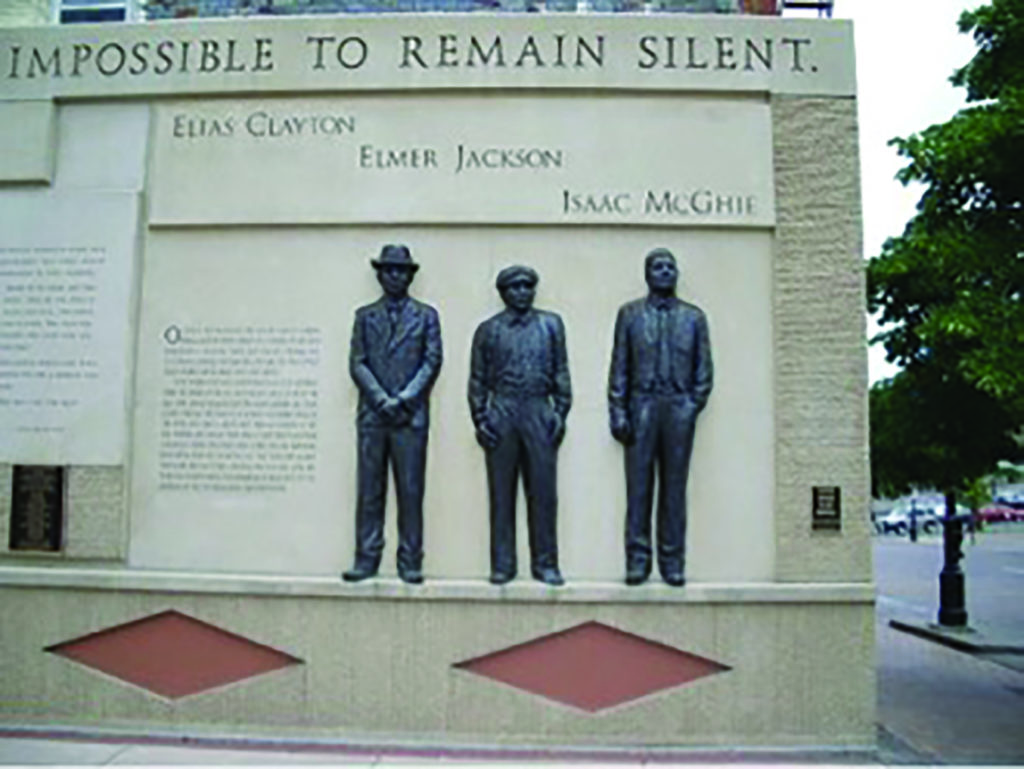BY HOWARD McQUITTER II
On June 15th, 1920, three young African American boys””Elias Clayton, 19 years old; Elmer Jackson, 19 years old; Isaac McGhie, 20 years old””working for the John Robinson Circus were lynched by a white mob.

False accusations of rape of a white woman of nineteen years old by six African American men spread throughout Duluth. Although a physician found no physical evidence of rape, it didn”™t matter because the white mob (estimated between 10 and 15 thousand) was determined to lynch the three boys already in jail. The mob was able to break into and nab Clayton, Jackson, and McGhie and the mob tried to break into a more fortified part of the jail where more Black men were jailed, but were not successful.
While the mob was in a frenzy, other African Americans who unfortunately may have been in the way were thrown into Lake Superior. Contrary to popular belief, about 21,000 African Americans lived in Duluth before the lynchings. After the 1920 lynchings, the number of African Americans living in Duluth drastically declined. Why would the average Black person still reside in Duluth when the majority of the white community turned against them? Once the murderous mob did their deadly deeds and three Black bodies violated, the only punishment issued three white men were imprisoned for rioting.
Although the lynchings of Clayton, Jackson, and McGhie made headlines nationwide, soon after the “dust settled,” the horrific incidents in Duluth that June 15, 1920, silence about what happened that hot summer day prevailed for decades. In other words, “Minnesota Nice” went into cruising mode. (I found out about the Duluth lynchings, circa 1966.)
The Duluth lynchings came on the heels of “Red Summer” of 1919, when racial tensions exploded in cities like Chicago and Omaha””spreading into 25 cities””also to mention countless lynchings North and South with smells of burning crosses by the resurgence of the Ku Klux Klan.

An anti-lynching bill was passed on April 21, 1921 in Minnesota, a good thing, but on the other many restaurants still continued to refuse service to Blacks and Blacks had to sit in the balcony in local theaters. For months, Blacks in the city feared of their lives choosing to lock themselves in their homes.
A memorial for Clayton, Jackson, and McGhie was established in 2003. La Tonya Autry, researcher and doctoral student at the University of Deleware; Sharon Sayles Belton, Mpls. Mayor 1994-2001; and the late African American activist, Ron Edwards (1939-2020) helped to make the memorial possible. What would have been much better than a memorial: reparations for all Duluth”™s Black descendants.
Howard McQuitter II is the fourth generation born in Minnesota on his mother”™s side.









